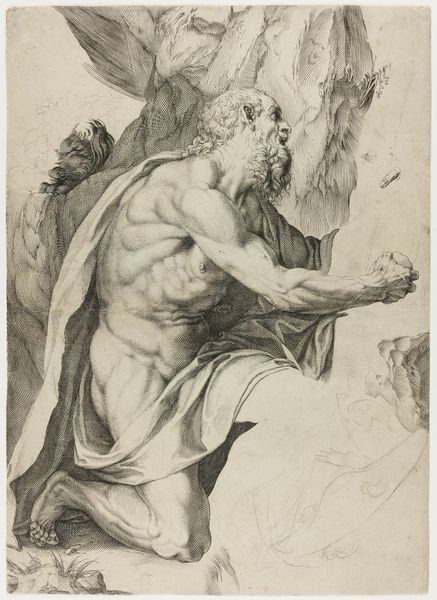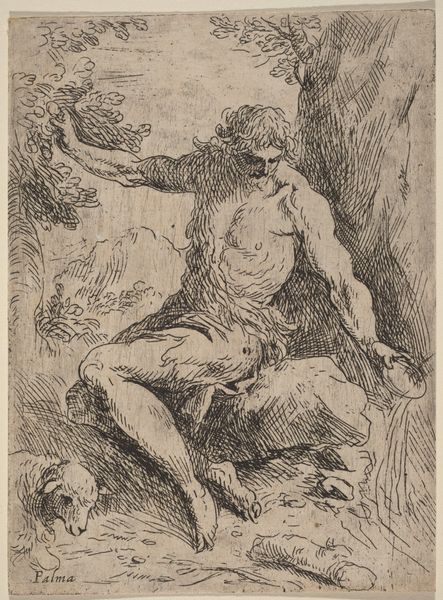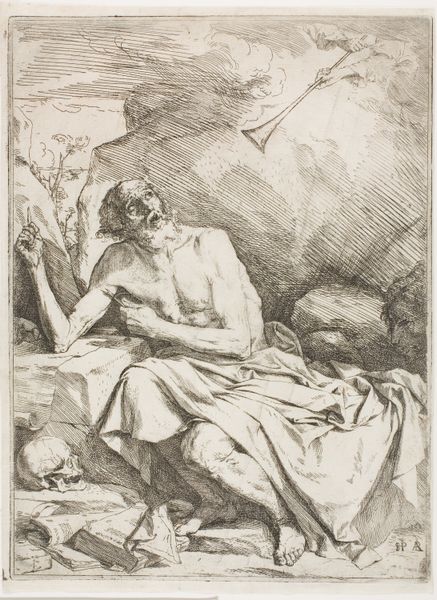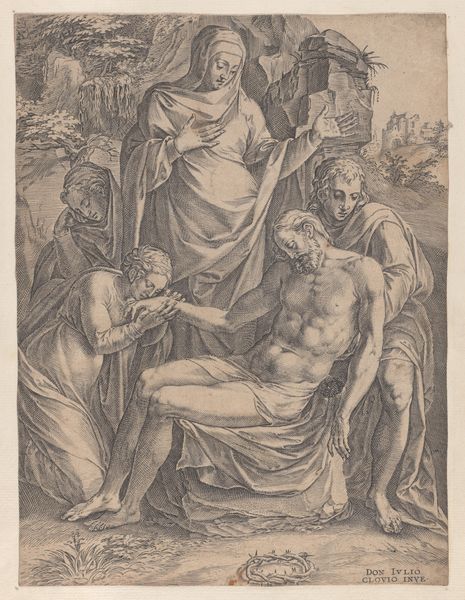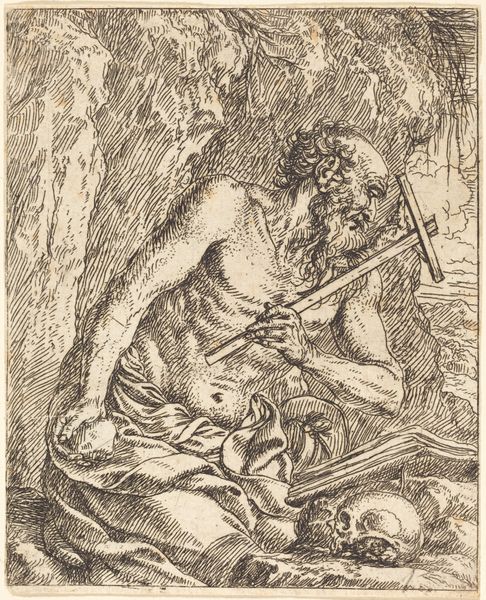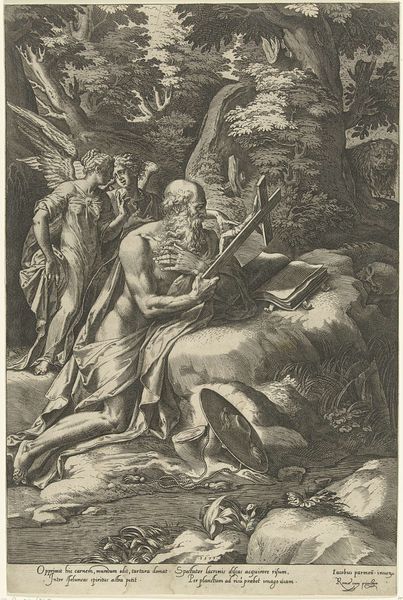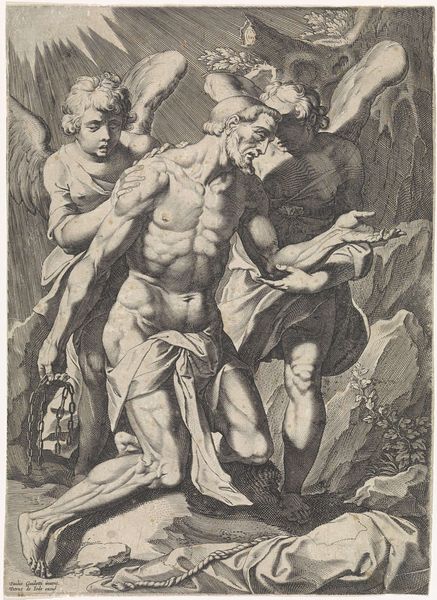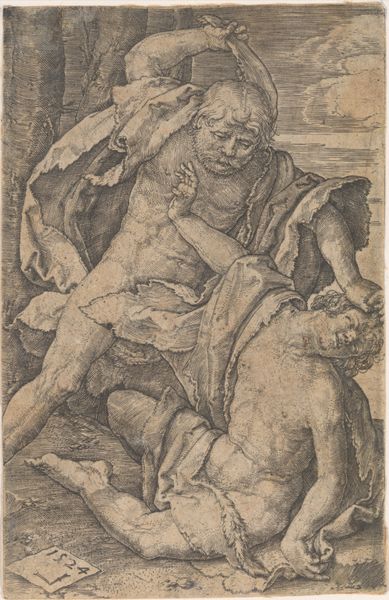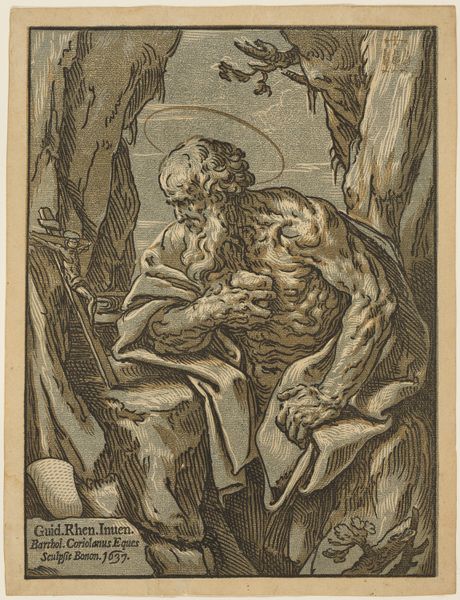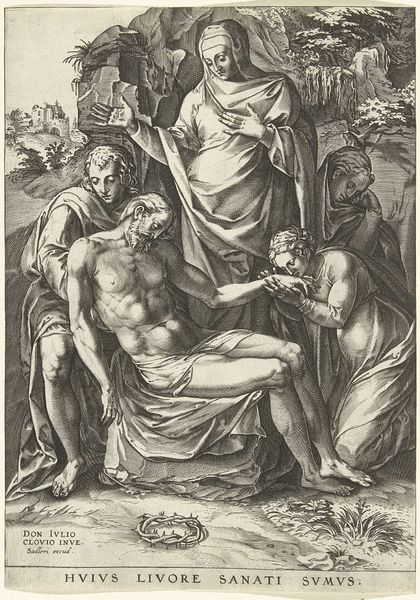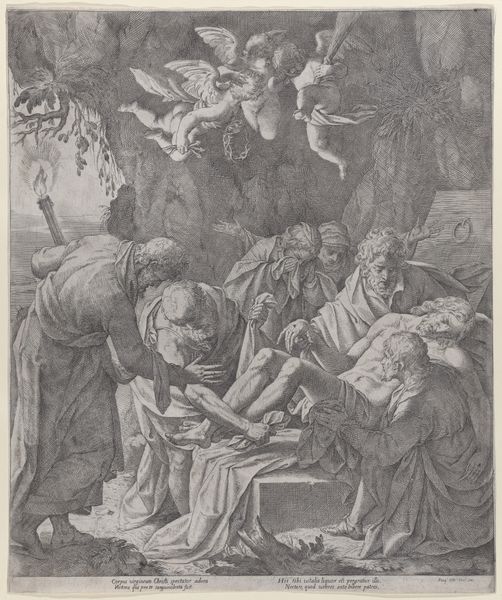
drawing, print, intaglio, paper, engraving
#
portrait
#
drawing
#
narrative-art
#
baroque
# print
#
intaglio
#
figuration
#
paper
#
portrait drawing
#
genre-painting
#
history-painting
#
academic-art
#
engraving
Dimensions: 390 × 281 mm
Copyright: Public Domain
Editor: This is Agostino Carracci’s “Saint Jerome in Penitence,” a print done in intaglio. The dramatic lighting and musculature really evoke a feeling of struggle and introspection. What stands out to you in this piece? Curator: The depiction of Saint Jerome here transcends a simple biblical narrative. It invites us to consider the broader themes of male identity, vulnerability, and the societal pressures placed on men to conform to stoic ideals. Do you notice the lion lurking in the background? Editor: Yes, it's hard to miss! The lion seems to symbolize both Jerome's power and a potential threat, but can you expand on the vulnerability aspect? Curator: Absolutely. The rendering of Jerome's aging body, the evident strain in his posture – these elements challenge traditional representations of male strength. We are presented with a figure who is simultaneously powerful and exposed. How does the setting impact your understanding? Editor: I hadn't thought about it like that, but I see what you mean. The rocky landscape and the implied isolation emphasize his solitude and internal conflict. He is in nature, away from people. Curator: Precisely. And consider this: the historical context shapes our interpretation. Carracci was working in a society grappling with shifting ideas about faith, knowledge, and the individual's place in the world. What does the presence of a skull suggest? Editor: That is true. I would argue the skull points to an increased awareness of death but also calls into question whether penance will alter that outcome. Thanks, I am not sure that I would have noticed those nuanced themes without considering its context. Curator: That’s the power of art. By connecting historical context with contemporary theoretical frameworks, we see artworks as sites of ongoing dialogue, rather than static objects. Editor: I’ll definitely be keeping that in mind as I keep studying art.
Comments
No comments
Be the first to comment and join the conversation on the ultimate creative platform.
